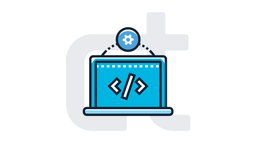13 Chapters ·
86 Lessons ·
0
1812
3929
1677
3074
1262
2036
2028
9377
3119
1208
3467
1005
-
-
C0.01: What is Learnio?
-
C0.02: Setting goals
-
C0.03: Join our Community
-
C0.04: How it works: Assignments
-
C0.05: How it works: Quiz
-
-
C1.01 - Course introduction
FREE PREVIEW
-
C1.02 - Getting started with the development process
-
C1.03 - Environment setup part 1 - install Flutter SDK
-
C1.04 - Environment setup part 2 - install Android Studio
-
C1.05 - Environment setup part 3 - install Android Emulator
-
C1.06 - Environment setup part 4 - install Xcode and Command Line Tools (Mac)
-
C1.07 - Prepare Android Studio for development
-
-
C2.01 - Learn how to use variables
-
C2.02 - How to write functions
-
C2.03 - Using loops in your program
-
C2.04 - Use conditions to show different results
-
C2.05 - Classes and objects
-
C2.06 - Object Oriented Programming part 1 - Abstraction
-
C2.07 - Object Oriented Programming part 2 - Inheritance
-
C2.08 - Object Oriented Programming part 3 - Encapsulation
-
C2.09 - Object Oriented Programming part 4 - Polymorphism
-
-
C3.01 - Create your first Flutter project
-
C3.02 - Understanding the default app
-
C3.03 - Create a stateless widget
-
C3.04 - Convert a stateless to a stateful widget
-
C3.05 - Use of material button
-
C3.06 - Convert a widget into a button
-
C3.07 - Use a function to extract the logic
-
-
C4.01 - What is Pubspec.yaml
-
C4.02 - Import external images into your app
-
C4.03 - Import external fonts into your app
-
C4.04 - Single-page resume app part 1 - Using themes
-
C4.05 - Single-page resume app part 2 - Column widget, text widget, and circle avatar
-
C4.06 - Single-page resume app part 3 - Finishing touches
-
-
C5.01 - Overview of the Android folder
-
C5.02 - Android Gradle
-
C5.03 - Project build.gradle and app build.gradle
-
C5.04 - Understanding Android Manifest
-
C5.05 - Add different user permissions to the Android manifest
-
C5.06 - Generate a release APK file for your Android device
-
-
C6.01 - Overview of pub.dev
-
C6.02 - How to add a third-party package to your app
-
C6.03 - Add an app icon and splash screen
-
C6.04 - State-management part 1 - Using notify changes
-
C6.05 - State-management part 2 - Using the consumer
-
-
C7.01 - Getting started with an architecture pattern
-
C7.02 - Overview of Model-View-ViewModel (MVVM)
-
C7.03 - Create View and ViewModel classes with Provider ChangeNotifier
-
C7.04 - Add external packages and folder structure
-
-
C8.01 - Getting started with REST API
-
C8.02 - Overview of Unsplash’s API
-
C8.03 - Initial setup of the app
-
C8.04 - Convert JSON to dart and create a model file
-
C8.05 - Async and Futures in Flutter
-
C8.06 - Use service classes to fetch wallpaper part - 1
-
C8.07 - Use service classes to fetch wallpaper part - 2
-
C8.08 - Add theme data
-
C8.09 - Add a tab bar to the homepage
-
C8.10 - Using GridView, show the preview of wallpapers part - 1
-
C8.11 - Using GridView, show the preview of wallpapers part - 2
-
C8.12 - Using GridView, show the preview of wallpapers part - 3
-
C8.13 - Create wallpaper details page part - 1
-
C8.14 - Create wallpaper details page part - 2
-
C8.15 - Create wallpaper details page part - 3
-
C8.17 - Create a wallpaper preview page
-
C8.16 - Open wallpapers externally to save or download them
-
C8.18 - Finishing touches
-
-
C9.01 - Overview of Shared Preferences
-
C9.02 - Create a page to add to-do lists part -1
-
C9.03 - Create a page to add to-do lists part -2
-
C9.04 - Store to-do tasks in Shared Preferences
-
C9.05 - Create a ListView to fetch data from Shared Preferences part - 1
-
C9.06 - Create a ListView to fetch data from Shared Preferences part - 2
-
-
C10.01 - What are Git and Github?
-
C10.02 - Create a GitHub account
-
C10.03 - Overview of Github
-
C10.04 - Create a repository in Github
-
C10.05 - Push Taskly to the GitHub repository
-
-
C11.01 - Set up Firebase console for Android app
-
C11.02 - Add all the necessary packages
-
C11.03 - Create collections and documents inside Firestore
-
C11.04 - Write queries to fetch data from Firestore
-
C11.05 - Send added tasks to Firestore
-
C11.06 - Authentication process using Firebase Auth - Email and password
-
-
C12.01 - Prepare the project for release
-
C12.02 - Overview of how to release your app on Play Store

![Codertrust course-Adobe Premiere Pro Masterclass - Edit Videos Like a Pro [Level 1]](https://import.cdn.thinkific.com/17266/courses/1583607/dRvVadiZT9uNp2v4LWiz_Adobe%20Premiere%20Pro%20Masterclass%20Edit%20Videos%20Like%20a%20Pro.png)

![Codertrust course-Adobe Illustrator CC - Essentials Training Course [Level 1]](https://import.cdn.thinkific.com/17266/courses/1834223/A3HkFkUdQs4drCxs7FFA_Adobe%20Illustrator%20CC%20-%20Essentials%20Training%20Course.png)
